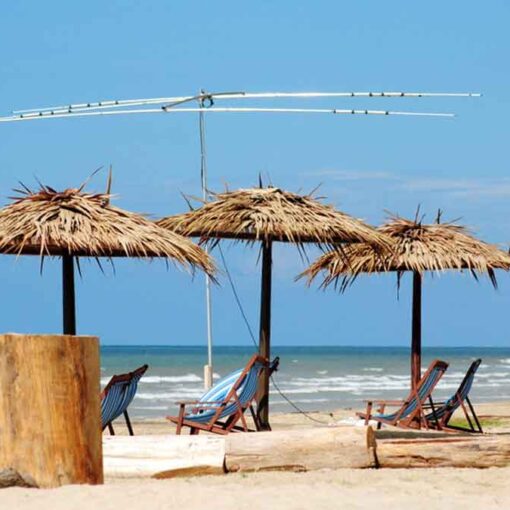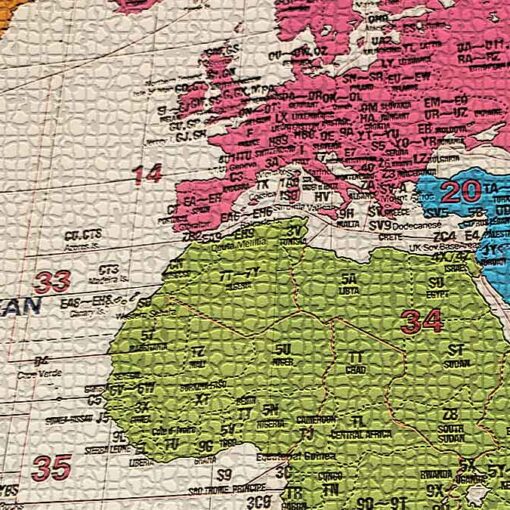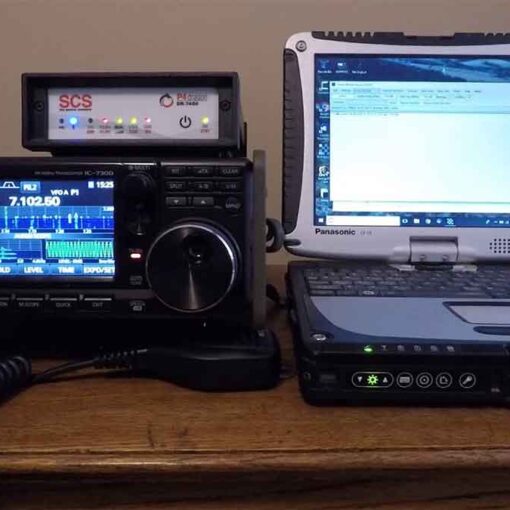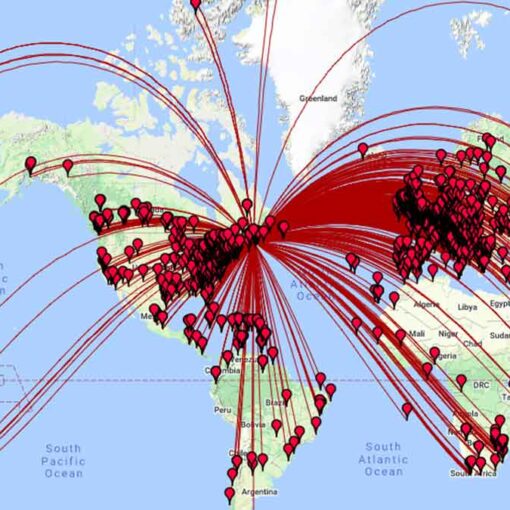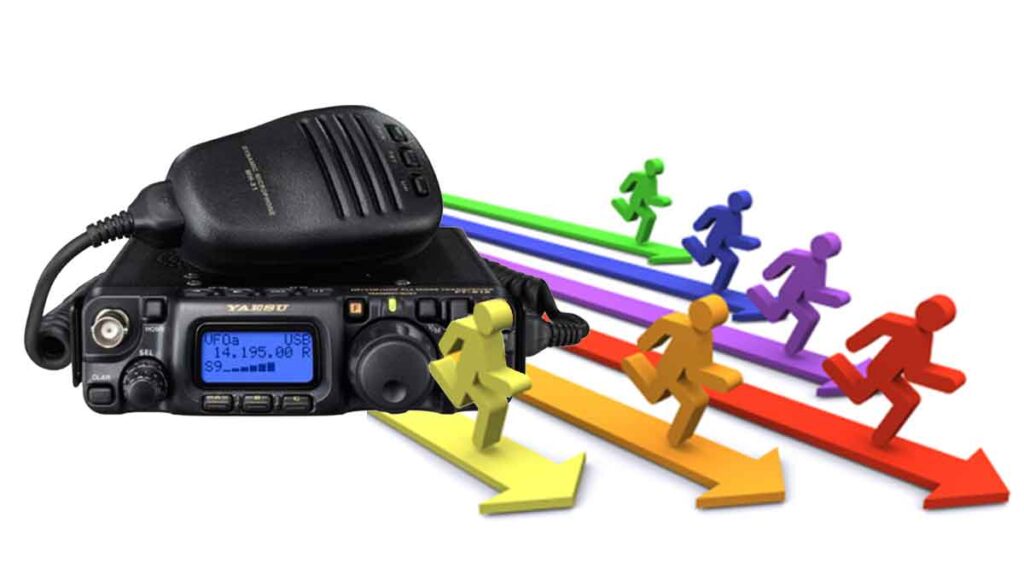
CW Contests
The contest means speed, efficiency and accuracy. So, transmit only what is strictly necessary.
The most effective CQ in a contest is the following: “GM3ZZZ GM3ZZZ TEST”. The word TEST should be at the end of your CQ call.
Why? Because anyone passing through your frequency at the end of your call will know you are calling CQ and participating in the contest.
Let’s say you end your CQ with your call sign: the passerby notices that he needs that initial, but doesn’t know if you’re calling someone else or making a general call. So he has to wait until the next call, which is a waste of time.
Therefore, in a contest, always end the CQ call with the word TEST. Note that even the word CQ may be dropped during a contest, as it contains no additional information.
An experienced competitor will respond to your CQ call by simply passing his initial once. Nothing more. Example: “W1ZZZ”. If you don’t answer him within a second, he’ll probably repeat his initial one more time unless you answer another one.
You have taken his initial and answer as follows: “W1ZZZ 599001” or “W1ZZZ 5991” depending on whether the contest rules allow unnecessary zeros to be omitted. It would be even faster if you use the short numbers (abbreviated numbers): “W1ZZZ 5NNTT1” or “W1ZZZ 5NN1” (see above).
In most contests, an RST report is exchanged, followed by the so-called Next number. Don’t transmit anything more. No “K” at the end, no “73”, no “CUL” or “GL” (good luck); there is no room for all of them during a contest where speed is the name of the game.
An ideal W1ZZZ will respond as follows: “599012” or “5NNT12”.
If he has not accepted your report, he should transmit: “AGN?”. If it doesn’t, then the report is received perfectly. It does not need to transmit “TU”, “QSL”, “R” or anything else to confirm the received report. It will be a waste of time.
All that remains is to complete the connection. The polite way to do this is: “TU GM3ZZZ TEST”. “TU” indicates the QSO is complete (thank you), GM3ZZZ identifies itself to stations wishing to call it, and TEST is a new CQ call. If the connection frequency is very high, you may abandon the TU.
Of course, there are different variations, but the key words are always speed, efficiency and accuracy.
Many competitors use computer programs that, in addition to log keeping, allow pre-programmed short CW messages (CQ, report, etc.) to be transmitted. An optional automatic telegraph switch allows the operator to intervene manually when necessary. Such a setup makes long contests less tiring and increases accuracy. Keeping a contest journal with pencil and paper is now history.
If you’re looking for a multiplier or stations you haven’t worked with yet, you should listen to the range. When you find someone, call out as follows: “LZ2ZZZ”. Don’t pass on his initial, it’s a waste of time. He is aware that you are calling him, due to the exact timing of the call, and due to the fact that you are transmitting your initial on a frequency that he operates on! Do not transmit “DE LZ2ZZZ”, the word “DE” contains no additional information.
If he doesn’t answer you in about a second, give your initial again, etc.
Example of a contested CW QSO:
DLOZZZ TEST (CQ call from DLOZZZ) (TEST is short for CONTEST)
G6XXX (G6XXX calls DLOZZZ)
G6XXX 599013 (DLOZZZ relays report to G6XXX)
599010 (G6XXX confirms that he has accepted and forwarded to DLOZZZ his report)
TU DLOZZZ TEST (DLOZZZ confirms acceptance, thanks and calls CQ contest)
Abbreviated numbers (short numbers) used in contests
The code to be exchanged in most contests contains a series of numbers, for example RST, followed by a three-digit sequence number.
To save time, the CW code of some digits is often abbreviated:
Abbreviated forms of Morse code:
| 1 | A (DIT DAH instead of DIT DAH DAH DAH DAH) |
| 2 | usually not abbreviated |
| 3 | usually not abbreviated |
| 4 | usually not abbreviated |
| 5 | Е (DIT instead of DIT DIT DIT DIT DIT DIT) |
| 6 | usually not abbreviated |
| 7 | is not usually truncatedwa |
| 8 | usually not abbreviated |
| 9 | N (DAH DIT, instead of DAH DAH DAH DAH DIT) |
| 0 | T (DAH instead of DAH DAH DAH DAH DAH) |
Example: instead of passing “599009” you can pass “ENNTTN”. “5NNTTN” is more commonly heard. When we expect to hear numbers, but instead hear letters, we record numbers. Good computer programs allow you to enter letters, the program automatically converts them into numbers.
A4 instead of 14 (or A5 instead of 15, A6 instead of 16): In some contests (eg CQ WW) you must pass your CQ zone number as part of the exchange. European countries are located in zones 14, 15, 16 and 20. Instead of transmitting “59914”, we often transmit “5NNA4” or even “ENNA4”.
